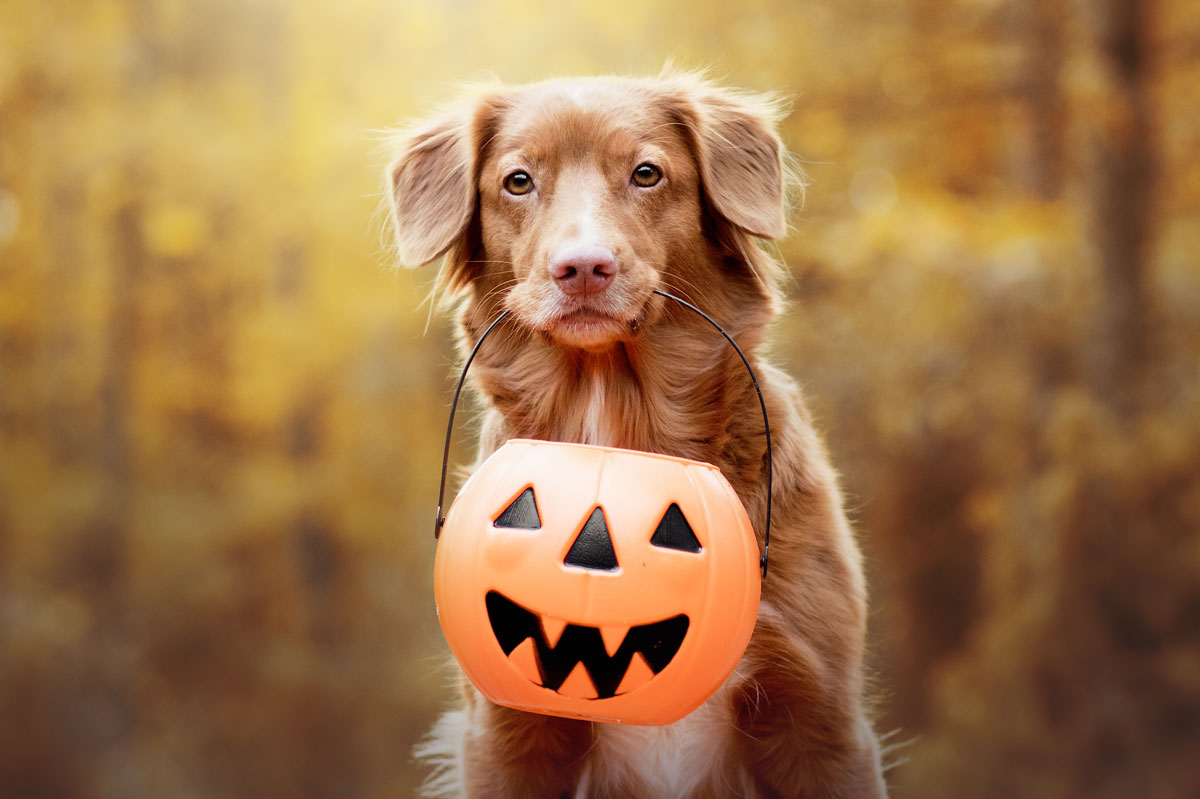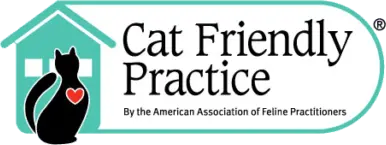Halloween is a night filled with mischief and mayhem, and it’s all in good fun until you find your sneaky pet with chocolate on their breath, gummy candy stuck in their fur, and cellophane wrappers scattered like confetti.
What now, you think? You immediately remove the remaining treats from your pet’s reach, but the damage is clearly done. Should you rush to your veterinarian, or call UrgentVet? Maybe your pet seems OK. As the doorbell rings yet again, you wonder, can it wait until morning?
Pet Halloween hazards
First, if possible, determine what your pet ate. Many Halloween treats are toxic to dogs and cats. If your pet stole goodies from your candy bowl, as opposed to a bag of assorted trick-or-treat prizes from the neighborhood, you’ll have a better chance knowing the ingredients they consumed. The biggest Halloween hazards include:
- Chocolate — In general, the darker the chocolate, the greater the risk. While chocolate ingestion of any kind is concerning, baker’s chocolate and dark chocolate are the most toxic to pets. Chocolate contains several toxic compounds, including theobromine, which causes increased heart rate, hyperactivity, muscle tremors, and seizures.
- Xylitol aka Birch Sugar —This artificial sweetener is present in sugar-free candy, gum, and mints, and is becoming more common in a variety of products and packaged foods. Xylitol can cause a rapid, life-threatening drop in blood sugar, and acute liver failure, in pets.
- Raisins — Baked goods and candies containing raisins or raisin paste can trigger acute kidney failure in dogs and cats.
- Macadamia nuts — Some candies contain chopped nuts or nut filling. Macadamia nuts can cause pancreatitis and nerve and muscle dysfunction, rendering a pet severely weak, painful, or unable to walk.
- Excessive sugar and fat — Any candy consumed in high quantities can cause electrolyte imbalance, pancreatitis, or gastroenteritis.
- Wrappers and small toys — Dogs and cats may play with, or ingest, cellophane, foil, or plastic wrappers, small party favors, and holiday decorations. These inedible items may result in choking or gastrointestinal obstruction. If your pet is actively choking, perform the Heimlich maneuver on your dog or cat, and contact UrgentVet immediately.
Toxicity signs in pets
Perhaps you were not around when your pet ingested candy, or you aren’t sure which pet knocked over the candy bowl. Signs can vary depending on the kind of candy or foreign object ingested, but the most common signs include:
- Vomiting
- Diarrhea
- Hyperactivity (e.g., pacing, panting, vocalizing, and attention-seeking)
- Increased thirst
- Shaking or muscle tremors
- Lethargy
- Weakness
- Loss of coordination
- Seizures
What to do if your pet has consumed Halloween candy
Do not attempt to make your pet vomit. Immediately call your pet’s regular veterinarian or UrgentVet. Your pet’s case can be triaged over the phone and, based on what your pet ingested, how long ago, and their current condition, you will be instructed to bring them in for treatment, induce vomiting, or monitor their condition.
If you are asked to bring your pet to the veterinary clinic, also bring the packaging of what your pet ingested for the veterinarian. If your pet ingested part of the packaging, bring the remaining pieces and one of the intact candies, if possible.
At the veterinary clinic, your pet will receive a full physical evaluation. Depending on what your pet consumed and how long ago, the veterinarian may elect to:
- Induce vomiting to purge your pet’s system
- Orally administer activated charcoal to bind remaining toxins in the GI tract (once bound, they pass harmlessly in the pet’s stool)
- Run lab work, such as a complete blood count, chemistry, and urinalysis, to assess electrolytes, kidney, and liver function
- Perform X-ray imaging to determine the presence and location of a gastrointestinal obstruction, and to see if surgery is warranted
- Hospitalize or refer your pet to another facility for continual care and monitoring—if your pet has an irregular heart rate or rhythm, blood work abnormality, seizures, or is dehydrated, intravenous fluids and medication will be needed, to reverse the toxin’s damage
Because of the wide range of toxins and potential outcomes, you should call your veterinarian or UrgentVet for recommendations after your pet ingests candy. Being proactive rather than reactive is always better, and if treatment is necessary, early intervention can ensure a better outcome for your pet.
Halloween pet safety and toxin prevention
Don’t let your pet be the one to scare you on Halloween. Follow these tips, to ensure their safety during the spookiest night of the year:
- Keep pets safe and secure — Confine pets to a quiet part of the home during trick-or-treating hours or house parties. Too much activity means pets can easily steal tasty treats or slip out of the house. Keep current identification on your pet at all times.
- Keep treats out of reach — Do not place candy bowls near the counter’s edge, or on low tables. Ensure children do not take candy to their rooms or sort it where pets can reach.
- Inspect their stash — For added peace of mind, when you inspect your children’s candy, also keep your pet in mind. Discard any candy that contains xylitol, raisins, or macadamia nuts. Store chocolates in a closed container.
ASPCA Poison Control
ASCPA’s poison control hotline is a great resource for pets who have ingested potentially dangerous toxins. The hotline is staffed by veterinary toxicology experts and is staffed 24/7. The telephone number is 888-426-4435. There is a $75 fee that covers the veterinarian and staff – and in addition, you receive a case number that you can give to the urgent care clinic or your veterinarian for a consultation on your pet. Learn more on the ASPCA’s website.
When it comes to your pet’s health, don’t be haunted by fears or what ifs. If you know or suspect your pet has ingested candy or a toxic substance, act quickly. Contact your regular veterinarian or call UrgentVet for professional and convenient after-hours veterinary care.





